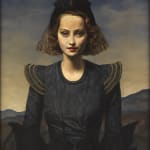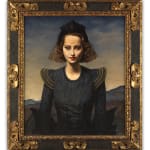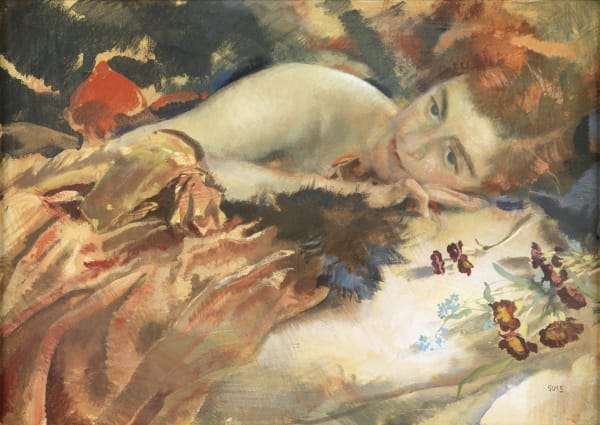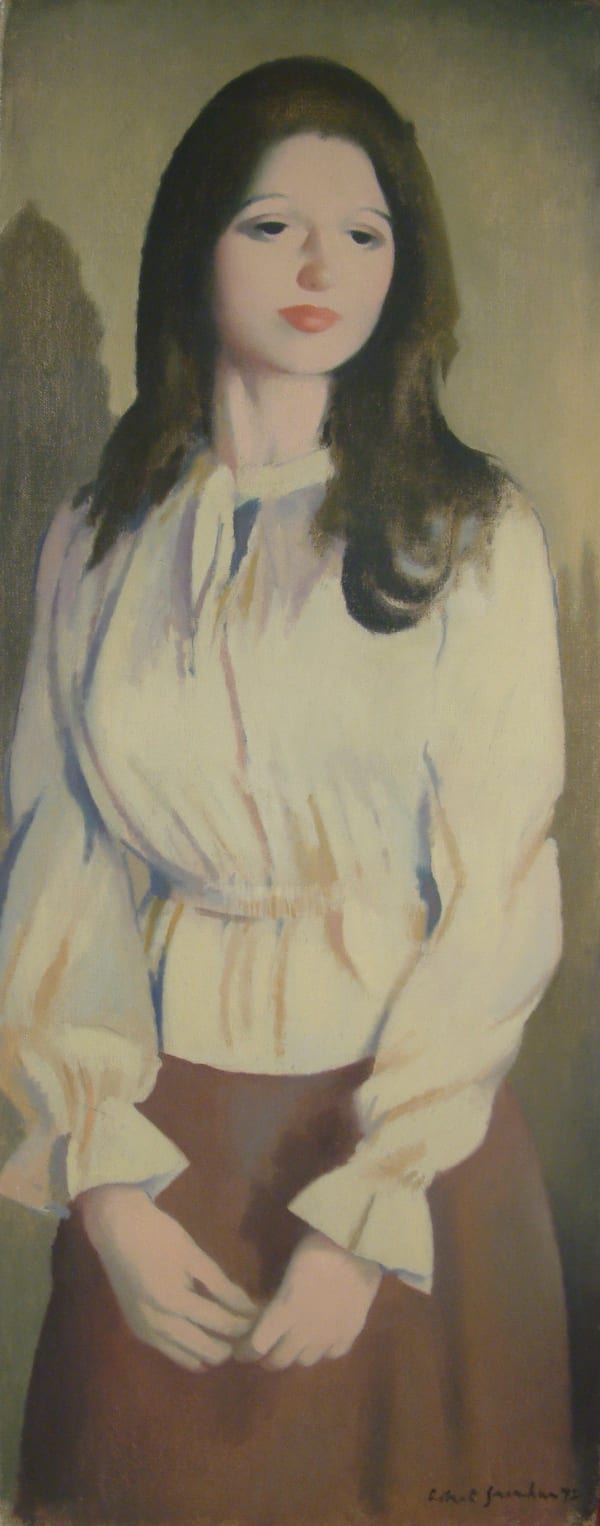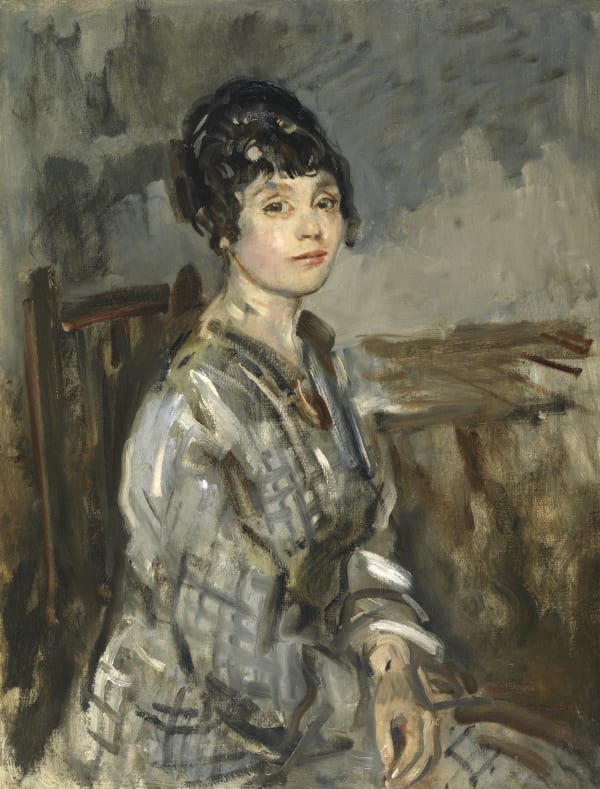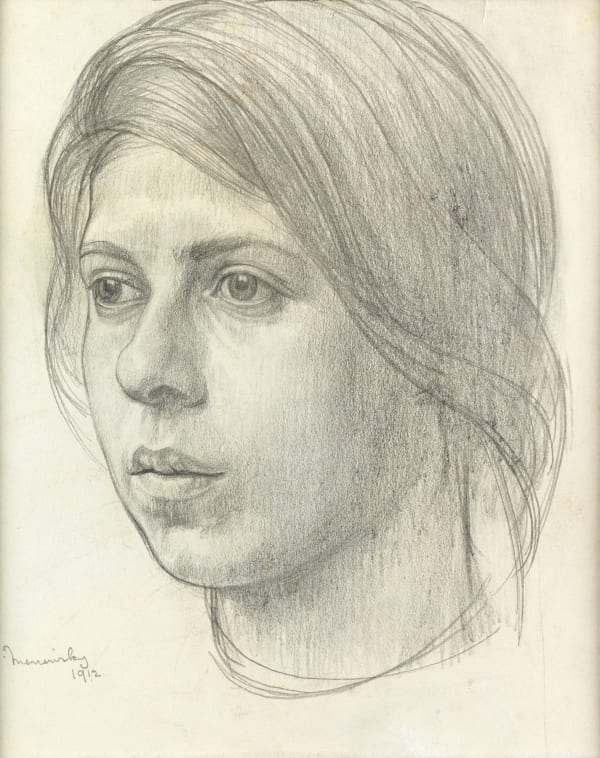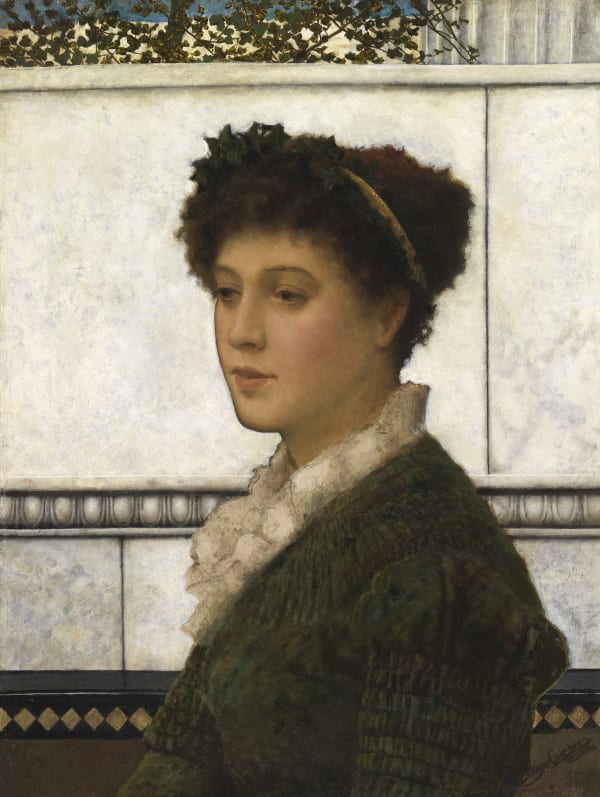Gerald Brockhurst (1890-1978)
Provenance
Merle Oberon, acquired from the artist, 1937;
Thence by descent
Exhibitions
Royal Academy, 1937, no 268
Royal Society of Portrait Painters Touring Exhibition, 1938
Literature
'Merle Oberon's Portrait', Maryborough Chronicle, Wide Bay and Burnett Advertiser, Queensland, Australia, May 3, 1937, p 3
The Tatler, 5 May 1937, ill, p 31
The Sketch, Christmas Number, 1937, ill
'The Royal Academy, 1937: Portraits of Actresses', Illustrated London News, May 1 1937, illustrated
In this iconic painting, the exotic beauty that stares at us from another time (1937), and another planet (Hollywood), is Merle Oberon, born Estelle Thompson in India in 1911, of mixed race. Her real life was as strange as her image: she was raised as the daughter of Arthur Thompson, a British mechanical engineer from Darlington who worked for the Indian Railways, and his wife, Charlotte Selby, part Sinhalese and part Māori. However, according to her birth certificate, Merle’s biological mother was in fact Charlotte’s then-12-year-old daughter, Constance, who was the result of the rape of her mother by the Anglo-Irish foreman of a tea plantation when she was 14. To avoid scandal, Charlotte raised Merle as Constance’s half-sister. Dark skinned, she was subjected to racist prejudice from her schoolmates at her prestigious school in Calcutta. Merle protected herself in adulthood by inventing a new story, claiming that she had been born in Tasmania, that her father had been killed in a hunting accident and that her birth records had been destroyed in a fire. She denied her past, or inhabited her adopted identity, to the end. She became one of the most glamorous of film stars. Her screen name is from the French for blackbird and from the king of the fairies in Shakespeare's A Midsummer Night’s Dream. Her first important role was as Anne Boleyn in The Private Life of Henry VIII in 1933, with Charles Laughton, which led to leading roles in films such as The Scarlet Pimpernel, The Dark Angel (a performance that earned her an Oscar nomination, which we now recognise as a first for an actor of South Asian origin), and in 1939 to her iconic role as Cathy in Wuthering Heights opposite Laurence Olivier as Heathcliff. Amongst her lovers were David Niven, Richard Hillary the RAF fighter pilot, and John Wayne. Merle Oberon and her team were highly skilled at managing her ‘brand’, and her image. She told a journalist for Film Weekly in 1939 that ‘I couldn’t dance or sing or write or paint. The only possible opening seemed to be in some line in which I could use my face. This was, in fact, no better than a hundred other faces, but it did possess a fortunately photogenic quality.’ This quality was seriously threatened in March 1937, whilst Merle was in London with the director Alexander Korda (whom she married in 1939), when she was involved in a car accident which left her needing plastic surgery on her face, notably in front of her left ear. The film they were working on, I Claudius with Charles Laughton, had to be abandoned. Brockhurst had started his mesmerising picture of her (there is a remarkable series of photographs by Harry Todd of the sittings dated 1 February 1937) and finished it for the Royal Academy in May that year, so he was working on it whilst she was recovering from the surgery. The painting caused a sensation at the RA. Her face is strongly lit from her right side, with her scarred left side in shadow. It is fascinating to study the lighting and angles of images of her after her accident, starting with Brockhurst’s extraordinary painting. After divorcing Korda, Merle later married the cinematographer Lucien Ballard, who devised a special camera light for her, which became known as the ‘Obie’, especially to obscure her scars on film. Choosing Brockhurst to paint her picture was a smart move, for he was ‘the highest paid painter and etcher in the world’ (The Bystander, 20 October 1937, p 21 – the painting had been on the cover of the magazine’s 5 May issue). The Times noted that Merle’s costume was carefully constructed in the height of fashion: ‘Mr Gerald Brockhurst paints Miss Merle Oberon in a fashionable off-the-face black halo-bonnet with a veil at the back and wearing an ornate gown in black taffeta with dull gold cord epaulettes and an embroidered necklace of jet beads’ (‘London Fashions: Portrait Studies at Burlington House’, The Times, 20 May 1937). Her head piece, which has evolved in the painting from the simple beret visible in the early Todd photographs into a sculptural headpiece like a mantelpiece ornament, is set with an amethyst (Merle’s birthstone). After divorcing Ballard in 1945, Merle married Bruno Pagliai in 1957 and adopted two children, one of whom inherited this portrait.
-
 Charles Sims (1873-1928)ViviennePOA
Charles Sims (1873-1928)ViviennePOA -
 Robert Duckworth Greenham (1906-1975)Seventies Girl£3,800
Robert Duckworth Greenham (1906-1975)Seventies Girl£3,800 -
 Arthur Ambrose McEvoy (1877-1927)The GovernessPOA
Arthur Ambrose McEvoy (1877-1927)The GovernessPOA -
 Bernard Meninsky (1891-1950)Head of a Girl£12,500
Bernard Meninsky (1891-1950)Head of a Girl£12,500 -
 John Atkinson Grimshaw (1836-1893)BrunettaPOA
John Atkinson Grimshaw (1836-1893)BrunettaPOA -
 Sir Gerald Kelly (1879-1972)LorettaPOA
Sir Gerald Kelly (1879-1972)LorettaPOA -
 Christopher Wynne Nevinson (1889-1946)WandaPOA
Christopher Wynne Nevinson (1889-1946)WandaPOA -
 George Spencer Watson (1869-1934)A StudyPOA
George Spencer Watson (1869-1934)A StudyPOA -
 Richard Buckner (1812 - 1883)Self-Portrait£12,000
Richard Buckner (1812 - 1883)Self-Portrait£12,000
The Maas Gallery, 6 Duke Street, St. James's, London, SW1Y 6BN
+44 (0) 20 7930 9511 | mail@maasgallery.com
This website uses cookies
This site uses cookies to help make it more useful to you. Please contact us to find out more about our Cookie Policy.


